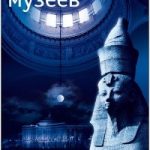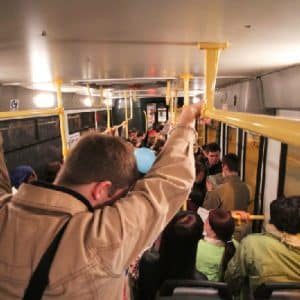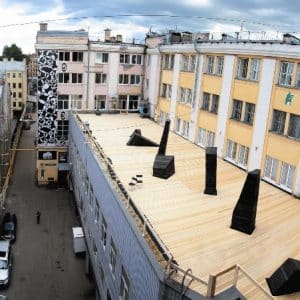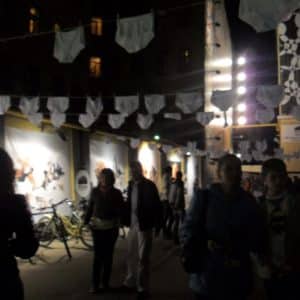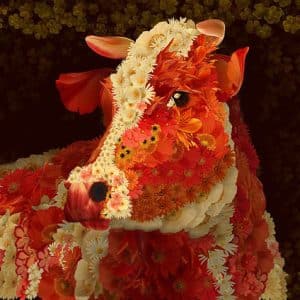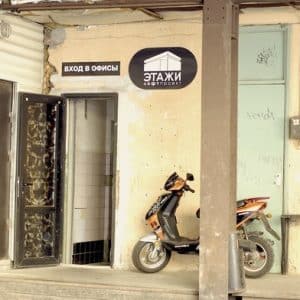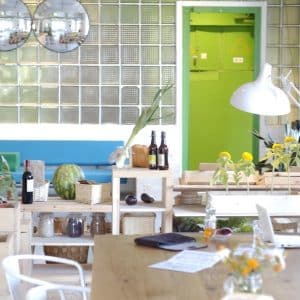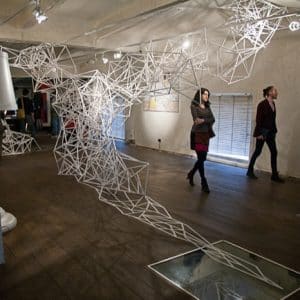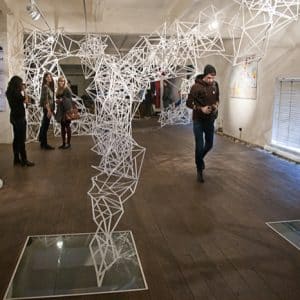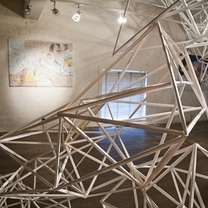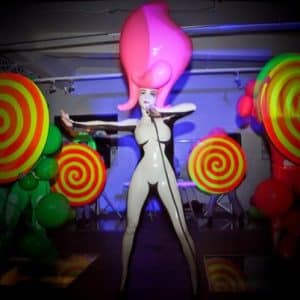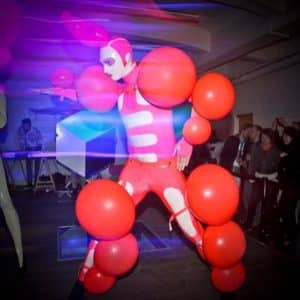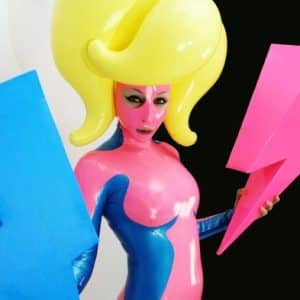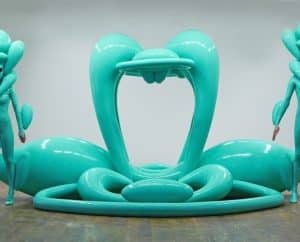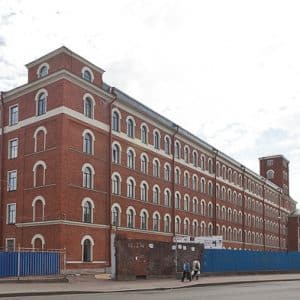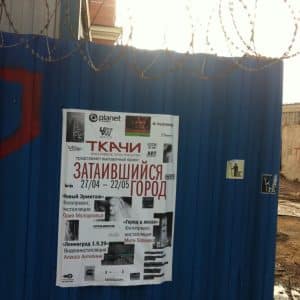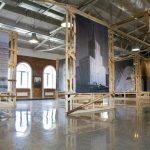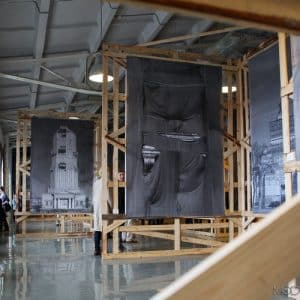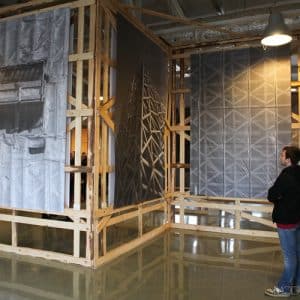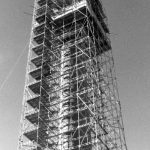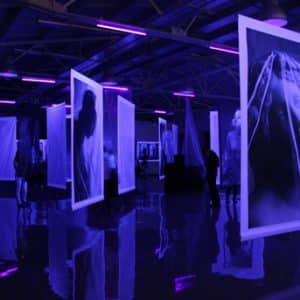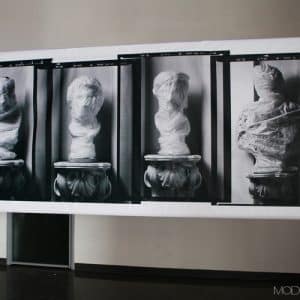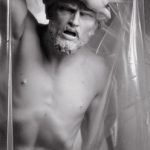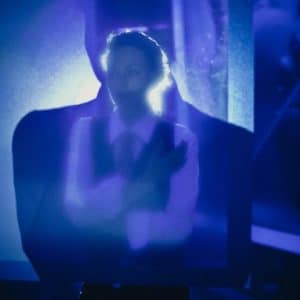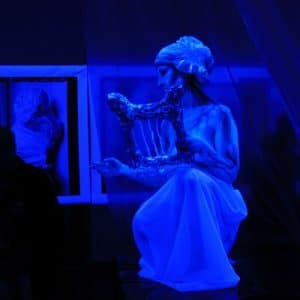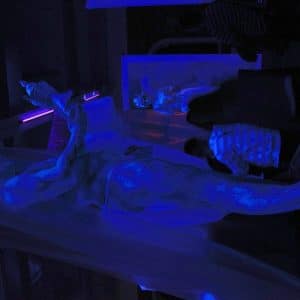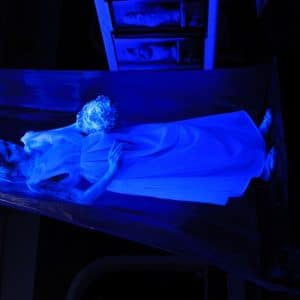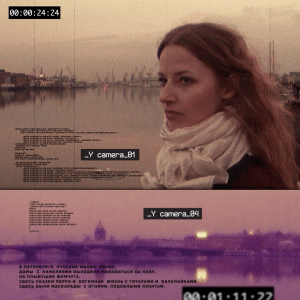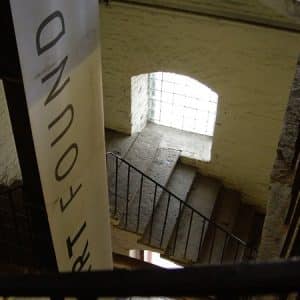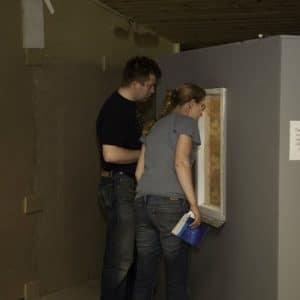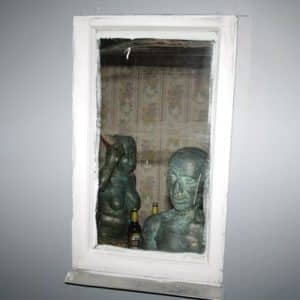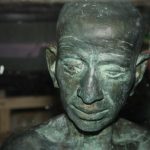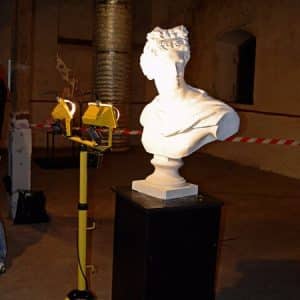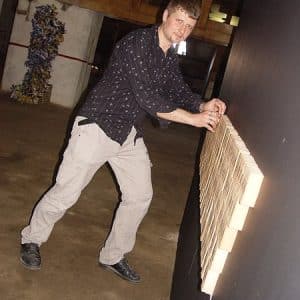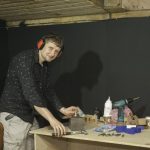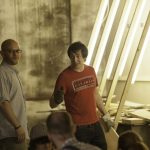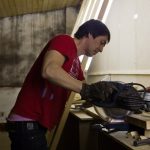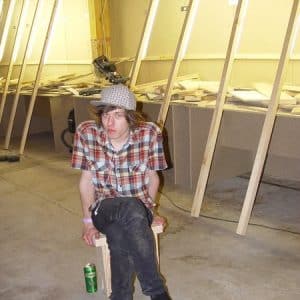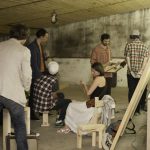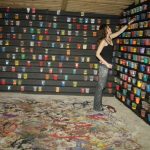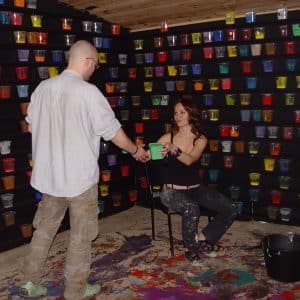Once a year, in over forty countries spanning Europe, nearly three thousand museums remain open late into the night for “Night of Museums.” Since 1977, International Museum Day has been recognized worldwide on or about May 18th. As a way to celebrate this holiday, Night of Museums was established in 1997 in Berlin. A little over a decade later, in 2008, St. Petersburg joined in on the festivities.
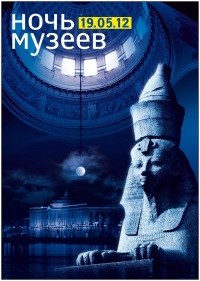
This year in St. Petersburg, 77 museums, galleries, and libraries (not to mention the city zoo!) participated, remaining open from 6pm-6am. The theme, городские тайны or “city secrets,” inspired a spectacular array of interpretations. Though it can feel near impossible to see everything this annual event has to offer, if you involve, at least, one of St. Petersburg’s art lofts, you won’t walk away disappointed.
The purchase of one ticket for 300 rubles (or about ten dollars) covers entry to all locations. Tickets to the full event are sold at all participating venues and can be purchased ahead of time or during the event. Guidebooks in English or Russian are handed out with ticket purchases. The website is also extremely helpful and informative. Each location is listed along with address, map, nearest metro station, phone numbers, and website address. You can create an online itinerary by adding locations to your “route,” which is then outlined with mileage and locations nearby that you might not want to miss. This personalized route can be uploaded to mobile devices as well.
The metro lines of St. Petersburg shut down around midnight, but temporary buses run throughout the city center, Petrograd side, and Vasilyevsky Island. These buses are listed as part of your personalized route as generated by the website. Keep in mind that the bridges go up at night, separating different islands of St. Petersburg. It is best to head out early and stick to one island or the city center for the later part of the night. Fortunately, three of St. Petersburg’s largest art lofts are located within the city center: Loft Project Floors, Creative Space Tkachi, and Rizzordi Art Foundation Loft.
St. Petersburg has a number of art lofts, but the three lofts within the city center are really something to see. Multi-level and multi-functional, each is located in a renovated factory. Renovating old factories for living space and exhibition use is not a new idea—back in the 1940’s, New York City was transforming the factory district of Manhattan into stylish housing, office space, and a center of artistic life. In addition to art exhibitions, these lofts have retail stores, cafes, workshops, lecture space, cinemas, and even hostels.
Every year for the Night of Museums, lofts present a feast of art from every discipline. Their large size and multi-use facilities allow for, what feels like, endless exhibitions.
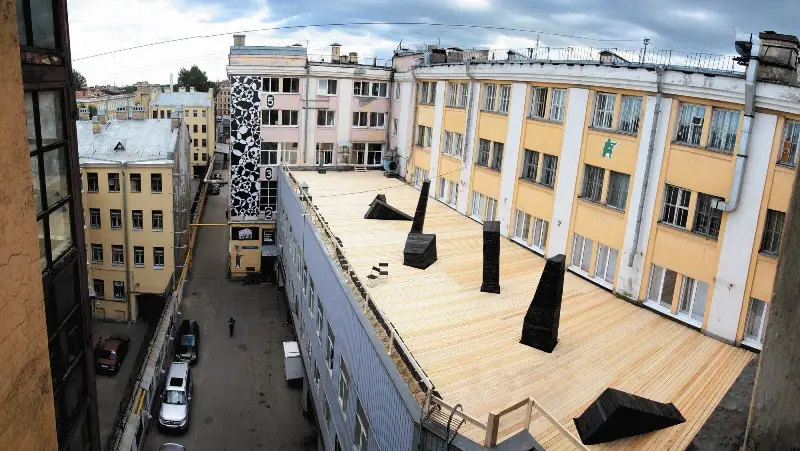
Loft Project: Floors/Лофт Проект ЭТАЖИ
Loft Project: Floors opened in 2007, making it the oldest of the three lofts. Located on the bustling Ligovsky Avenue, the entrance to Floors would almost be missed on a normal day. A small door leads to a foggy old window with a receptionist. After saying the Russian word for floors, етажи or “etazhi,” visitors are allowed to open another door, which leads to a courtyard. Floors is located across this small courtyard.
The building was once the Smolninsky Bakery, a massive bread-baking factory. Remnants of the facility still linger, such as metal-edged concrete columns and bread-baking equipment. The four floors of the building combine for a total of 5000 square meters. Scattered throughout are several exhibitions spaces, art galleries, designer clothing and book stores, a bar, a café, and a hostel. Unique décor and antique furniture create a special quality to each space, the lighting done by the rather pricy Dutch company Moooi.
For the Night of Museums, Floors revealed the passions of artists. Obsessions, dreams, and fantasies were presented through digital media, installations, and unique performances in dedication to the main driving force of art: love.
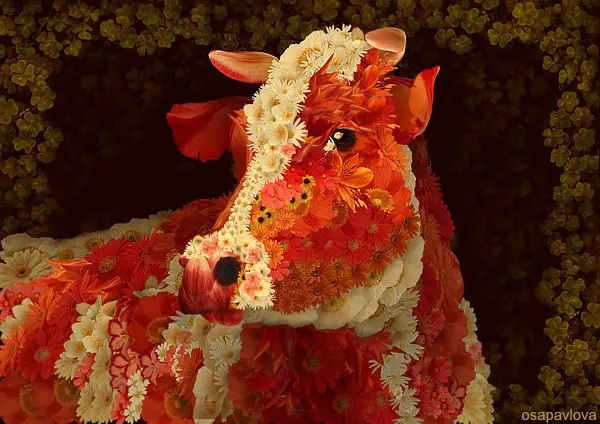
In the courtyard of Floors, there is an external exhibition space called the Fotowall. This space is designed for weather-proof photography. Olga Pavlova exhibited, “Cat, Dog,” a collection of digital collages. Pavlova, known as osapavlova, is a freelance artist who works in graphic design, digital art, and illustration. Her stunning digital collages play with the eye. From a distance, each collage forms the portrait of an animal, such as a cat, dog, cow, or bird. As the viewer nears the portrait, the collage begins to reveal itself. “Cat, Dog” is comprised of many portraits of different species of cats and dogs. “Flowers” is a collection of white and red flowers that form the realistic image of a cow. “Paradise of a Thousand Birds” uses 300 species of birds to form the realistic image of a duck’s head. Delicately selected, each piece of the collage forms the shadows and contours of the animal portrait. Pavlova created a video that reveals the process of piecing together these collages. The video also doubles as listening practice for anyone interested in learning the Russian plural form of “cat” or “dog.”
This incredible exhibition was positioned beneath a mass of men’s underwear strung on clothing line above the courtyard. This random addition to the courtyard created a playful tone to the area. It was also an excellent introduction for visitors as they entered Floors for the night. The absurd, the beautiful, the thought-provoking, and the strange would be side-by-side on every floor, providing an honest and interesting portrayal of the art scene in St. Petersburg.

The Fifth Floor Space, a large exhibition area, had a couple exhibitions and plenty of performances all night. Spread throughout the main hall of the space was “Deconstruct,” a spatial installation of geometrical shapes constructed from white sticks. In between the large structures along the floors and walls, two dimensional paintings extended in the same style.These paintings connected the physical structures, which then appeared multidimensional and distorted the viewer’s perspective of the space itself. This exhibition was designed by local street-artist Inky (Incubus Project), who has a background in architecture. Throughout the month of May, he returned to subtly change the shape of the structures. His work complemented the performances of the avant-garde performance group Aquaaerobika.
Aquaaerobika is a Moscow-based group that was formed in 2008 by Sasha Frolova, an avant-garde latex artist. Brought up in the art world under the wing of Andrei Bartenev, she has made a reputation for herself as a Russian Lady Gaga. Frolova and Bartenev are out of this world as designers, sculptors, and performers. They met during one of Bartenev’s workshops at the Museum of Modern Art in Moscow. After a few workshops, Frolova became one of his most successful pupils and creative partners. They are almost always together in public, wearing stylish costumes and catching the eye of the press.
For Aquaaerobika Frolova designs skin-tight latex costumes for herself. Initially designed as a mix of 80’s trend and aerobics, Frolova’s character has grown with her interest in the history of pop art from 50’s pin-up to Japanese anime. Costumes of other members of the group are designed by Bartenev, whose trademark in clothing design is spherical extensions that hang from the head, arms, or legs. Frolova has explained in interviews that all she wants to do is spread love and joy to her audience.
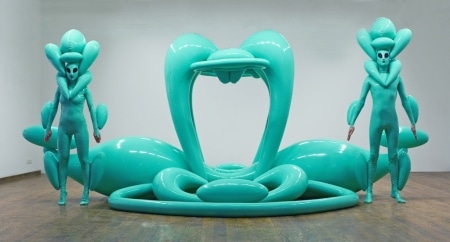
Frolova puts love into hyper-drive with everything she creates. Set apart from the angles of “Deconstruct” and the performance area was one of her latex sculptures. “Lyubolet: The Spaceship of Love” is a large sea-foam green sculpture created around the same time Aquaaerobika formed. Frolova designed it along with two matching costumes for astronauts. The sculpture itself looks like two abstract swans with embracing heads, forming the classic arches of a heart. The performance associated with the “Lyubolet” involves two people that explore the ship, hold hands, and sit.
Other artists also brought their visions to life through installations and performance-art as well as photography, avant-garde film, and paintings. Some of the art distorted reality while other pieces explored fantastical visions. Nothing was ordinary and that was captivating even when it seemed all too surreal. If love was the driving force behind every exhibition, it was no wonder that positivity radiated from the entire venue. This incredible loft has a lot to offer any day of the week, but during the Night of Museums, art is no longer precious but a simple, good time. Enjoy the fun music and the endless floors.

Сreative Space Tkachi/Креативное пространство Ткачи
The red brick façade of Tkachi is stunningly bright against the canal it overlooks. Taking great pride in the building’s history as a spinning and weaving mill, the building is named for the Russian word for weavers, ткачи or “tkachi.” Once renovation to the mill was partially completed in 2010, Tkachi quickly opened its doors. Only the first and fifth floors are in use while the others remain under renovation.
The first floor is leased to dozens of retail shops, which sell designer clothes, designer bags, bicycles, eye glasses, and books. Each shop remained open for the night until 1am. The 2000-square-meter exhibition space on the fifth floor includes a small bookshop named for Jorge Luis Borges, a café, and lecture space. Xenia Urkova, curator for the Tkachi exhibition space, created a contest for the Night of Museums. Three artists were selected for a cohesive exhibition, “Hidden City/Затаившийся город,” which invited visitors to explore a different view of St. Petersburg.
Mitya Harshak’s “City in the Woods” was a collection of large photographs taken of different buildings and monuments around St. Petersburg during their reconstruction. Leading up to the city’s 300th anniversary in 2003, many famous sites around the city were renovated. Harshak preserved the transformation of the city through his photography. Focusing on the cloth and scaffolding shrouding the city’s famous structures, Harkshak brought to light the nature of the buildings’ original designs and how, for a short time, they changed.
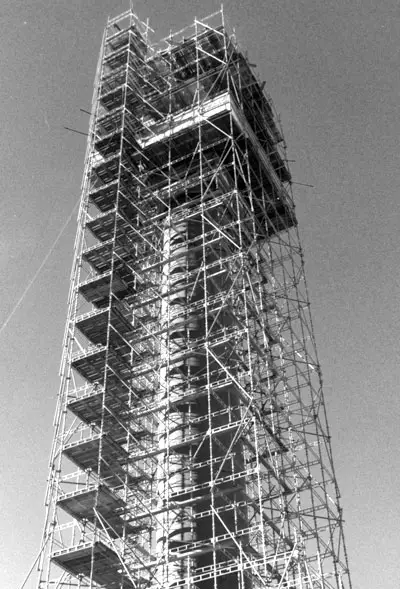
These re-births and changes are the focus of Harshak’s career as a photographer. He explores cities like an archeologist, looking for clues of transformations. For the exhibition, the photographs were printed on canvas and hung on tall scaffolding that acted as walls, re-creating the physical textures that the photographs represent.
The neoclassical design of buildings and monuments, such as St. Isaac’s Cathedral and the Alexander Column in the Palace Square, were covered with harsh geometrical scaffolding, transforming their slender curves into constructivist angles. Constructivism is an architectural style and philosophy that originated in Russia in 1919 and flourished in the following decades. Through the cracks of scaffolding and ripped cloth, ruined fragments of Imperial Russia teased of the past while a construction reminiscent of Soviet architectural style shrouded each building. Harshak explored the modern identity of Russia through his documentation by discovering two time periods in Russia’s history side by side.
The photographs reveal that no matter how much cities change through time, the past is always present. Walking within the temporary wooden structures, the title held more meaning. Though manmade, scaffolding covered the city, burying it in a kind of forest.
“New Hermitage” by Yuri Malodkovets was a colossal exhibition of black and white photography presented in a rather unique format. Molodkovets has photographed for more than 120 catalogs and albums for the State Hermitage Museum. Access to this world-renowned wonderland is the main premise of his exhibition. For his job, he has the opportunity every day to observe the life of the museum, its objects, and, in turn, their metamorphosis through time.
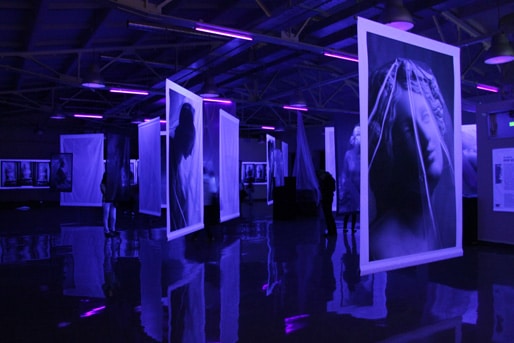
The subjects of his exhibition were stored marble statues shrouded in polyethylene. The large photographs were hung throughout the space, which was lit by black lights, causing the white of the photographs to glow. A few feet in front of each photograph hung a sheet of polyethylene equal to the size of the associated photo. The glowing photography became muffled by this material as if replicating what it might be like to be the statue looking out into the world. Visitors were able to walk between the sheets of polyethylene and see the exhibit itself become a blur.
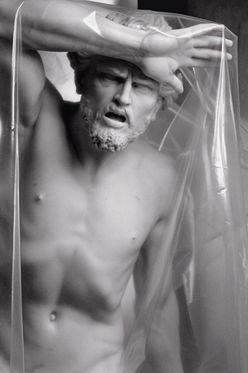
Along a full wall of the exhibition was a series of photographs printed on a single, long strip of paper. The images showed marble busts smothered by polyethylene. The scenes were disturbing, but the polyethylene added a remarkable element to these compositions. Transparent as glass, flexible as cloth, this graceful veil is almost a sculpture on its own in mid-flight. Other photos captured the mood of the material in a different way. Ancient marble statues grimaced as if trying to escape from the plastic material, making the polyethylene ghostly. Molodkovets has said of this project that it is search for “harmony and beauty in the modern world.”
For four hours late into the night, the performance group Xenia Elisseeva became “warm marble,” supplementing Molodkovet’s exhibition. Each performer was clad in Grecian attire with their skin painted to mimic marble. They stood on assorted polyethylene-draped platforms that were separated from or interacted with the photographs. One pair of performers was exceptionally powerful. A muscular man stood above a seated woman, each looking in a different direction with equal despair. The performers sat or stood for minutes at a time, keeping their faces as starkly serious as the atmosphere. They held marble-like torches or harps. Adding to the realism, one woman was bare-breasted. The graceful performance was absolutely captivating.
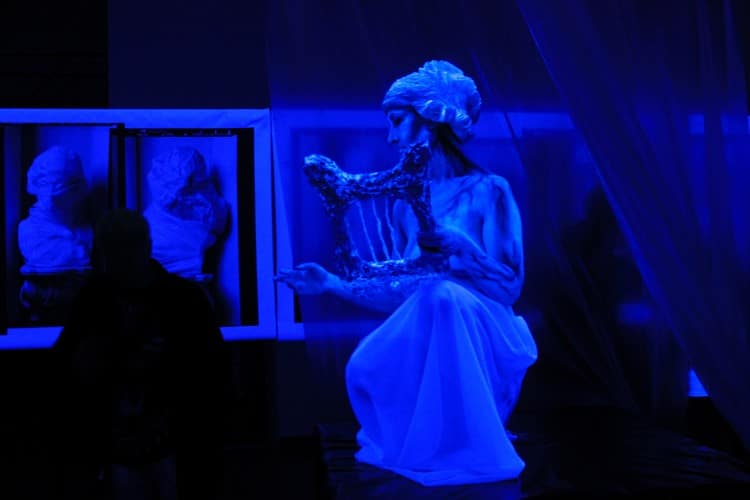
Set between the two photo exhibitions, Alexander Antipin’s 12-minute video installation, “Leningrad 1/9/29” was projected onto three large screens that hung from the ceiling. The installation was based on Konstantin Vaginov’s novel Goat Song, a tale of an intellectual circle active in the 1920’s similar to the one that existed around Mikhail Bakhtin, a philosopher and literary theorist.

The central video follows the character Maria Dalmatova of Goat Song played by actress Polina Tolstun. As she walks through St. Petersburg, her fluid voice narrates from different parts of the novel. The image of Dalmatova repeatedly pixilated and distorted, revealing an essence of non-existence to her character. The cinematography imitates assorted security cameras filming her from surrounding areas. At times, shaking geometrical shapes fill the space all around her. Writer Alex Karpova explains on Antipin’s Behance website (a network for sharing creative work) that these shapes represent the space of sound as it exists in the urban environment. The entirety of “Leningrad 1/9/29” is also available on this website.
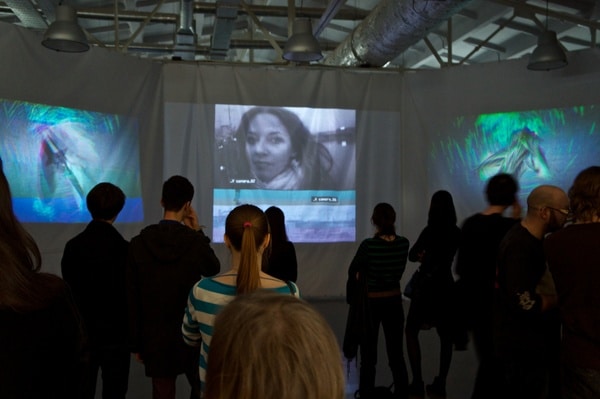
The two screens on either side showcased visions of geometrical sound-scapes that appeared to travel through infinite space. The conditions of anonymity are implied by the lack of physicality to anything being viewed. Images appeared to literally refract into the next as interference disrupted the harmony of the story. Interspersed within these geometrical scenes were aerial photos of Leningrad taken by German pilots in the 1940’s. These aerial shots capture the entire city and engulf the center screen.
Set up on three screens, the installation felt, at times, overwhelming. The perspective was voyeuristic as if Dalmatova was being studied from a far and distant future. The human questions of existence transformed into digital signals. In essence, it really was a sneak peek into a time and place (Leningrad) from a futuristic standpoint (St. Petersburg). More than that, though, it was a map of the chaotic noise of the past as it lingers, a study of urban noise aesthetics.
Tkachi’s “Hidden City” explored St. Petersburg from a variety of perspectives. From the storage rooms of one of the most famous museums in the world to the sky, visitors experienced the history of this city as physically and emotionally as possible. The wood, the polyethylene, and the noise all combined to form the essence of modernity and change for a city centuries old.
For a great behind-the-scenes view of setting up for this three-part exhibition, check out this video as well!
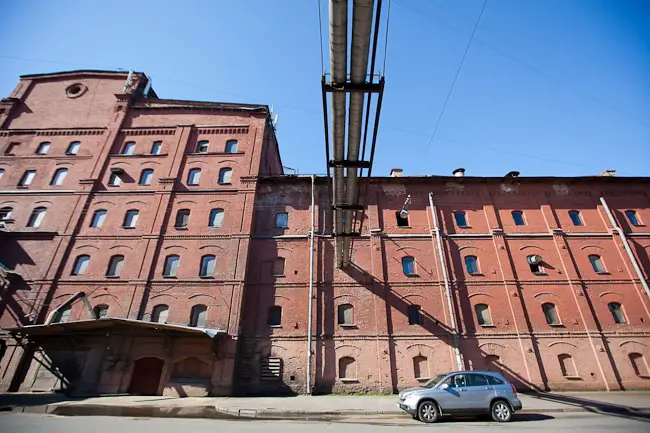
Rizzordi Art Foundation Loft/Rizzordi Art Foundation Лофт
The Rizzordi Art Foundation Loft is located in the old malt storage facility for the Kalinkinsky Brewery, one of the oldest breweries in Russia. The exhibition space is an incredible 4000 square meters split into galleries, a lecture auditorium, a cinema, as well as workshop spaces, a library, bookstore, and café. This place has a lot to offer visitors on a daily basis, which is what makes lofts so special. For the Night of Museums, the Rizzordi Loft presented “Hidden Rooms /Потайная Комната,” an interactive exhibition of ten of St. Petersburg’s most famous artists. These artists were asked to set up studios and work on any project for the entire night. Topics ranged from religion, current events to the future of indigenous people of Russia and art criticism. Visitors were able to enter these studios or “hidden rooms,” watch the artists, speak with them, and learn about how they formulate work.
One of the most well-known of the artists involved was Anatoly Belkin. He is a successful, internationally-renowned artist as well as the founder of popular fashion magazine Sobaka. More than an artist, Belkin is a personality of St. Petersburg. He is known as a fun trickster and even compared to Woody Allen, though it could just be his charming attire of corduroy, tweed, and sneakers. Though the Rizzordi Loft’s art studios would only last the night, it was a tempting offer for those who would like to visit Belkin’s studio in his apartment located in the Golden Triangle of St. Petersburg—near St. Michael’s Castle, the Summer Garden, and the Neva. Filled with eclectic furniture and knick knacks from all over the world, his studio apartment is a wonderland.

Despite his fame, Belkin’s presence at the event was not noted by any press. Perhaps this was because Belkin’s exhibition, “When we are gone, they will behave like us,” was too controversial. The title tells of the loss of culture in indigenous groups, arguing against their loss of identity in the developed world.
Belkin’s installation was a unique take on the “hidden room” theme. Made from wood and painted black, the large room had a single window. Through the window, the calm expression of a life-size, bronze sculpture of a nude man could be seen. Inside, four similar sculptures faced a television set, which aired a soccer game. A table piled high with spilled bags of chips and bottles of beer filled most of the small space. One nude woman with large, sagging breasts held up a fish and another absurdly wore goggles. From a distance, the lone figure at the window appeared quite small set against the darkness of the installation’s walls. Unable to speak or escape, the secret of this hidden room was powerful.
Olga Tobreluts is a pioneer of media art in Russia, working in a neo-academic style that popped up in St. Petersburg during the nineties. Neo-academicism has remained successful by being innovative to neo-classical intentions. Rather than clinically preserve the aesthetic ideals of antiquity or even acting as a parody, artists use new media to enhance and manipulate historical artistic styles for modern commentary. Tobreluts focuses on the idealization of pop culture in her works, depicting such famous figures as Leonardo DiCaprio, Andy Warhol, and Naomi Campbell as sacred figures in classical styles reminiscent of Rome. Her artistic process begins with distorting the past to interpret the present. In order to recreate this process for her hidden room, Tobreluts created a real camera obscura, which projected the image of a brightly lit marble bust. For the Night of Museums, this highly successful St. Petersburg local commented on her own artistic style by distorting the perspective of a classical piece of art.
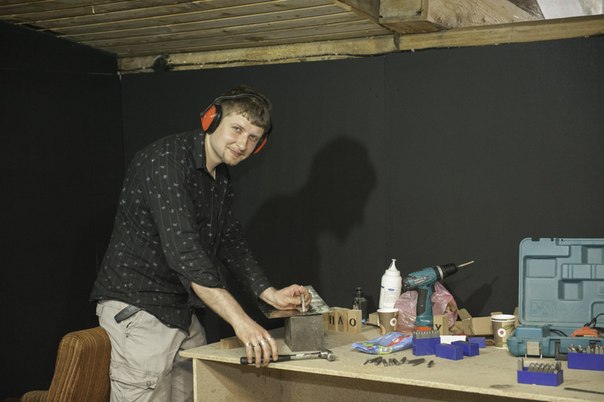
Alexander Dashevsky is an exceptional artist that has achieved widespread acclaim for his simple, yet emotionally stirring paintings. His hidden room contemplated one of the difficult sides to such success: criticism. Dashevsky set up a workshop equipped with small sheets of metal and engraving equipment. Hanging above this workshop was a collection of metal set in wooden blocks, each engraved with a single letter. All of these letters formed a declaration that these days, critics can be replaced with idylls, that there need be revenge for the criticism of Turgenev in the 19th century. By the end of the night, the walls of his studio were covered with quotes of his critics and his thoughts on criticism engraved into metal. Visitors were welcome to explore the equipment and try a hand at hammering a letter or two into the metal. The interactive element was inviting and encouraged thoughtful conversations about his artistic life and success. It truly opened the door to a hidden hardship for all artists to overcome.
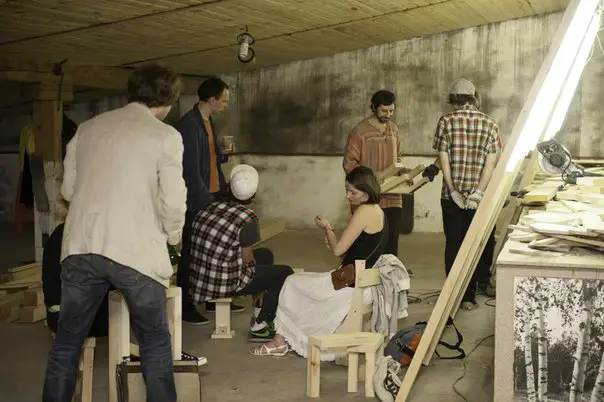
Irina Drozd and Ivan Plusch collaborated for the night, creating a kind of kitchen studio. Their installation, “Unstable Vulnerabilities,” recreated the mysterious aura that surrounds artists. Three walls were lined with small, plastic tubs of paint in a variety of colors much like a giant spice rack. The entire floor was painted in the style of abstract impressionism, to which the artists added throughout the night. Visitors were invited to chat and join in on picking out the next perfect color to add to the piece. Like making a pot of soup from scratch, the abstract painting was slowly spiced all night, the colors adding flavor and texture to the eventual product. The title of their installation dwelled on the fragility of paintings, their dependency on the perfect balance of color and texture. Slightly thought-provoking, it mostly brought a little fun to the evening. These two artists have previously collaborated on multiple projects. They also share a magnificent website designed in English and Russian with a concise gallery of their works as well as insight into their unique artistic styles.
Other artists of the evening focused on current events, the idea of displacement, and religion, each with their own signature style. The Rizzordi Loft felt endlessly enchanting. As if able to fly back and forth across the city, visitors travelled from one studio to the next with ease, exploring the lives of local artists—their thoughts, humor, passions, goals, and frustrations.
Until Next Year
There is something magical about walking through the halls of a museum or gallery in the middle of the night. Though it was a bit overwhelming to explore three of the largest art lofts of St. Petersburg in one night, the experience was reminiscent of a childhood fantasy. The theme of secrets intensified the atmosphere of intrigue and wonder the event already creates for the city.
Next year, the weekend after May 18th will inspire the city to come alive again late into the night with art and performances that range from the absurd to the amazing. To avoid getting lost in the bustling crowds, make sure to plan ahead with the website or guidebook. There is a whole city of art (lofts) to explore and no time to waste. You never know what the Night of Museums will bring, but it is guaranteed to make you change the way you see the world.


